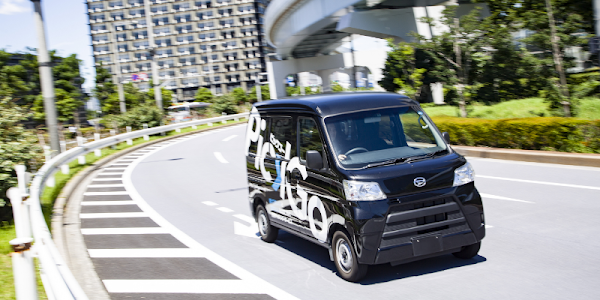Today’s post comes from Taichirou Tokumori, Software Development Engineer, CBcloud, and explores how CBcloud uses Google Maps Platform to help Japan’s delivery drivers become more efficient and improve their working conditions.
In an age of remote work, delivery drivers face an increasing burden due to the soaring demand of online shopping. At CBcloud, our mission is to empower drivers with technology and improve their working conditions. Thanks to a range of Google Maps Platform APIs and SDKs, we’re helping Japan’s delivery drivers become more efficient.
Logistics optimization is one of the keys to achieving our mission. By maximizing efficiencies, everybody involved in the delivery industry benefits, starting with drivers and extending to businesses and end users. Our goal is to build an optimized ecosystem underpinned by a vision that we call “Mobility as a Service (MaaS) of Things.” This means redefining the transport of people and things as a service, deploying cutting-edge technology to drive efficiencies and profitability, thereby resolving myriad economic and demographic problems in Japan’s rural regions.
A new logistics paradigm for Japan
In Japan’s logistics industry, the original shipper normally entrusts delivery to a subcontractor, who then passes the job onto another contractor, creating multiple layers in which delivery people lose out on their fair share of wages. The desire to overcome this issue inspired us to launch PickGo, a platform that directly connects shippers to delivery partners, bypassing intermediaries altogether. Launched in 2016, PickGo is available across Japan, 24 hours a day, 365 days per year. Vehicle dispatch is carried out in as little as 56 seconds, with a successful matching rate of 99.2%.
During the COVID-19 pandemic, the dramatic growth of e-commerce caused drivers to struggle with the increase in demand for their services. So we expanded use of SmaRyu Post, a mobile app that automates the process of delivery planning. This is done through a routing function that calculates everything from delivery addresses to optimal routing, and a “loading position indicator function” that determines the location in the vehicle for each parcel (according to the order in which they are meant to be delivered).
Until now, this work was carried out by relying on the driver’s own experience and rough visual estimates. It’s an inefficient process that often requires significant time simply to pinpoint a delivery location, especially when the driver is unfamiliar with the territory. Powered by Google Maps Platform, PickGo and SmaRyu enable drivers to cut the entire planning process for delivery, including job-driver matchmaking, route planning and parcel loading, to under one hour (on average).
Optimizing the user experience with Google Maps Platform
In developing these systems, we wanted to optimize the user experience of drivers. A key factor in our success is an intuitive Google Maps interface that makes using the app easy.
To run SmaRyu Post in conjunction with the existing PickGo system, we deploy a full range of Google Maps Platform APIs and SDKs in an integrated architecture. For app development, we rely on Maps SDK for Android to build mobile solutions that display dynamic maps in user-friendly fashion. Our apps then rely on Maps Javascript API as the core tool for loading and displaying various kinds of location information, such as landmarks and roads, within the app.
We deploy Directions API as the main service to calculate distances for optimal routing, while Geocoding API converts user addresses into precise coordinates. And an innovative use of Places API has proven crucial for last-mile delivery. With both Places API and Places SDK, we can easily establish the correct address by entering a building name and dropping a pin on the map. This combination unlocks the optimized user experience.
Empowering drivers to get the job done faster
The results of deploying a dynamic ecosystem of Google Maps Platform solutions have been significant. Thanks to Google Maps Platform APIs, PickGo achieved a reduction of between 50% and 60% in the time needed for calculating distance and price from the point it receives an order. SmaRyu Post, meanwhile, has slashed the time needed for working out optimal routing and parcel loading by 80% compared to the time drivers performed these tasks manually.
By deploying Google Maps Platform APIs such as Maps Javascript API, Directions API and Geocoding API, we have built a network of 55,000 registered drivers, with the average matching time between delivery request and driver at under one minute.
Our adoption of Google Maps Platform also led to the improvement of our team’s technology literacy. Many of our team use Google Maps, and want to learn more about how advanced mapping technology can change our world.
By helping us to invigorate the logistics sector, Google Maps Platform is enabling us to give a broader lift to Japan’s regions. In places facing depopulation, familiar shops are shutting one after the other. As transport services rapidly decrease, the difficulties in getting essentials such as food and household goods is becoming a big problem. We are offering solutions to resolve the logistics problems that Japan’s regions face, with systems that deploy Google Maps Platform.
For more information on Google Maps Platform, visit our website.
Cloud BlogRead More


